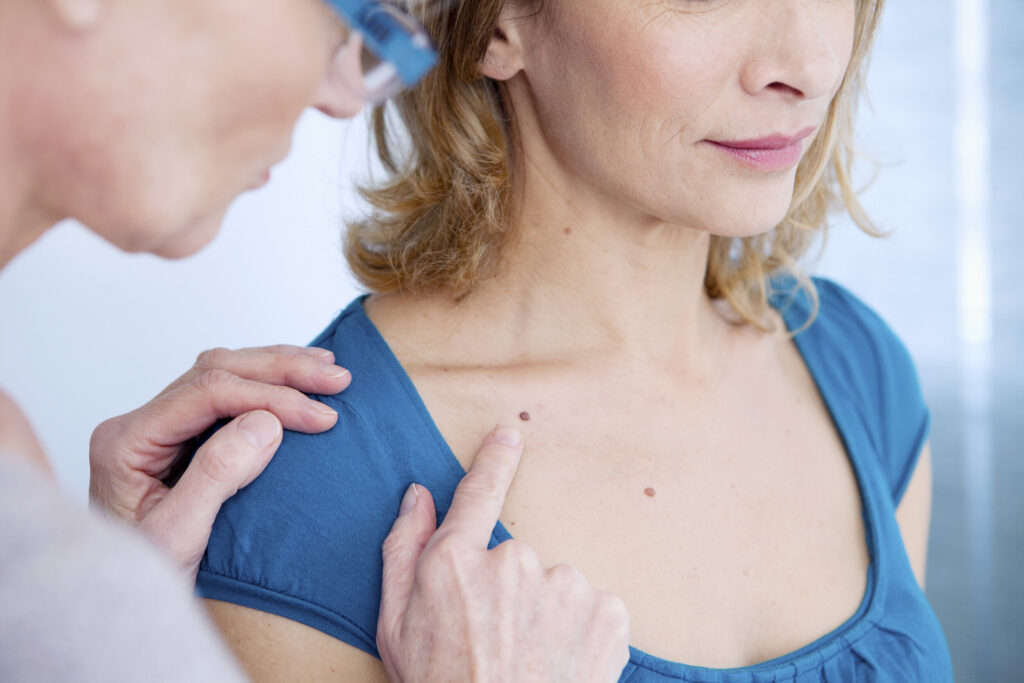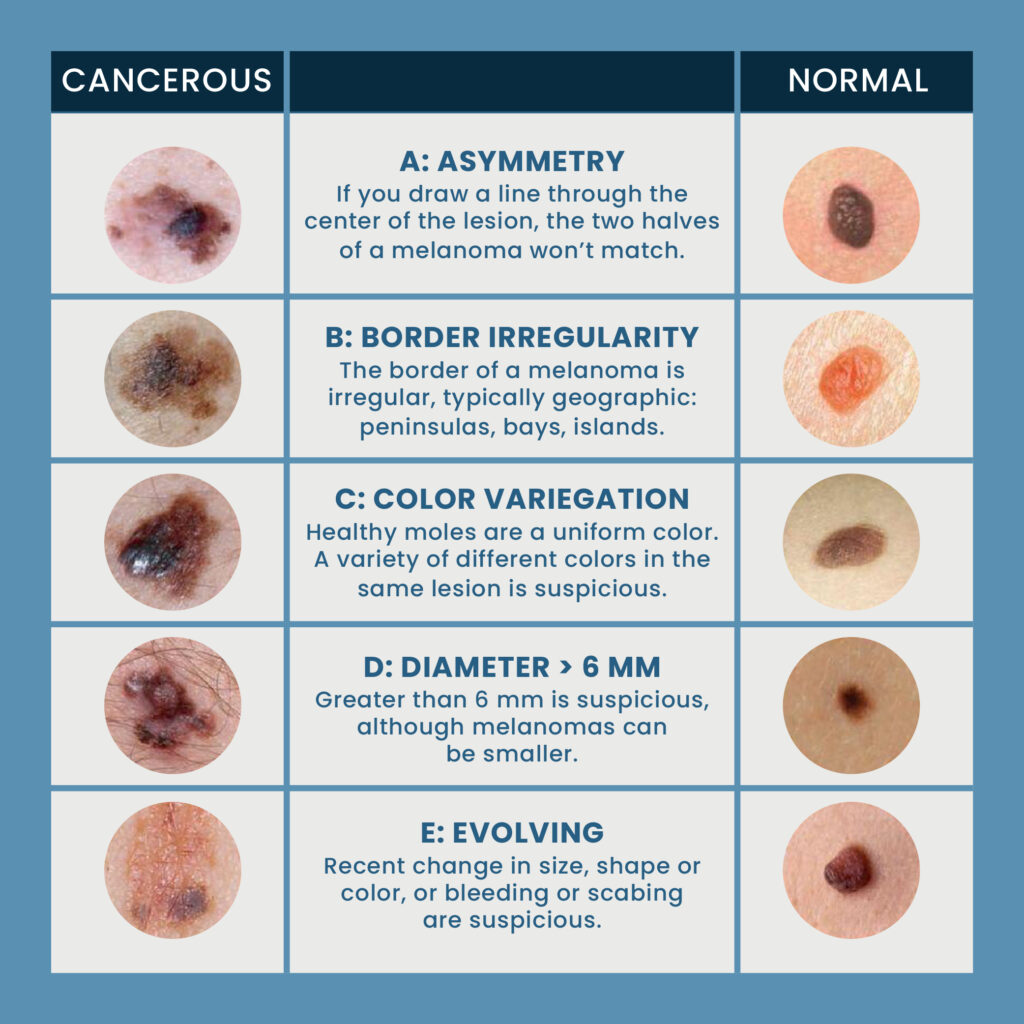Full Body Skin Exam
Prioritize your skin's well-being! Schedule a comprehensive skin exam today
Skin exams are a visual inspection of the entire body for suspicious growths, moles or lesions using a bright light and sometimes a magnifying glass for a closer look. Even the scalp is checked out by parting sections of hair to get a good look.
You should have a skin exam if you have:
- Suspicious moles or skin lesions
- Symptoms of early skin cancer
- A history of previous skin cancer
- 50 or more moles
- Atypical (unusual) or large moles
- A family history of skin cancer

Early Detection
Early signs of skin cancer are a change in the skin, such as a growth, an irritation or a sore that does not heal, or a change in a wart or a mole. Visual recognition of changes in the skin is the best way to detect early melanoma. The peak age for melanoma is around 55 years of age. Melanoma is most common in males on the upper back and in females on the lower legs.
Excessive sun exposure, previous sun burns, a family history of melanoma, more then 100 moles, previous history of skin cancer and fair skin are all risk factors for melanoma. If you have a changing mole, a new mole, or a mole that is different, contact us to schedule a skin exam as soon as possible.
It’s a good idea to check your own skin every month, and have your doctor check periodically. People who are at risk for skin cancer or those who are over 40 years old may want to have their doctor check their skin every year. If you have already had skin cancer, your doctor will recommend more frequent exams.
Follow the ABCDE Rule:
If you notice a mole on your skin, you should follow the simple ABCDE rule which outlines the warning signs of melanoma:
A stands for ASYMMETRY; one half unlike the other half.
B stands for BORDER; irregular, scalloped or poorly defined border.
C stands for COLOR; varied from one area to another; shades of tan and brown, black; sometimes white, red or blue.
D stands for DIAMETER; while melanomas are usually greater than 6mm (the size of a pencil eraser) when diagnosed, they can be smaller.
E stands for EVOLVING; a mole or skin lesion that looks different from the rest or is changing in size, shape, or color.
The American Academy of Dermatology urges everyone to examine their skin regularly. This means looking over your entire body including your back, your scalp, the soles of your feet, between your toes and the palms of your hands. If there are any changes in the size, color, shape or texture of a mole, the development of a new mole, or any other unusual changes in the skin, contact us to schedule a skin exam as soon as possible.

Other signs of melanoma in a mole include changes in:
- Elevation, such as thickening or raising of a previously flat mole.
- Surface, such as scaling, erosion, oozing, bleeding, or crusting.
- Surrounding skin, such as redness, swelling, or small new patches of color around a larger lesion (satellite pigmentations).
- Sensation, such as itching, tingling, or burning.
- Consistency, such as softening or small pieces that break off easily (friability).
Other signs of skin cancer include:
- A firm, transparent bump laced with tiny blood vessels in thin red lines (telangiectasias).
- A reddish or irritated patch of skin.
- A new, smooth skin bump (nodule) with a raised border and indented center.
- A smooth, shiny, or pearly bump that may look like a mole or cyst.
- A shiny area of tight-looking skin, especially on the face, that looks like a scar and has poorly defined edges.
- An open sore that oozes, bleeds, or crusts and has not healed in 3 weeks.
- A persistent red bump on sun-exposed skin.
- A sore that does not heal or an area of thickened skin on the lower lip, especially if you smoke or use chewing tobacco, or your lips are exposed to the sun and wind.
